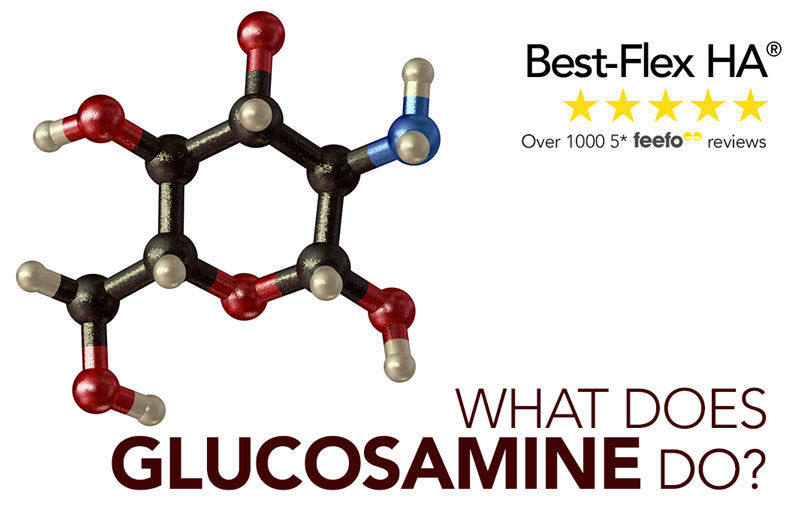Glucosamine is a well-known and widely researched joint health ingredient (Rodger, 2006 ). It is a small, water-soluble molecule that is a vital component of cartilage and occurs naturally in the synovial fluid around joints and in bones (Dahmer and Schiller, 2008).
Cartilage is the firm, rubbery tissue that covers the ends of bones where they form a joint. Cartilage reduces friction between the bones and absorbs shock, allowing smooth, free movement of the joints. Glucosamine is required for the production of glycosaminoglycans (GAGs), which form proteoglycans when combined with proteins (Barclay, 1998). Proteoglycans give articular cartilage its compression-resistant, shock absorbing properties.
Cartilage Degeneration
As horses age, and due to injury and general 'wear and tear' articular cartilage degrades, reducing joint movement and compromising mobility. The earliest recognisable and central feature to degenerative change in joints is loss of glycosaminoglycans from articular cartilage (Wright, 2011). Supplementing your horses diet with glucosamine can help to improve glycosaminoglycans production, supporting overall joint health.
Supporting joints with Glucosamine
Research has found that supplementing with Glucosamine can decrease inflammation and support new cartilage growth in response to a joint insult. Leatherwood et al (2016) found that, compared to the control group, yearlings supplemented with 10,000mg of Glucosamine over 84 days had a higher glucosamine concentration in blood and synovial samples, lower levels of Prostaglandin E2 (an indicator of inflammation) in synovial fluid and lower level of C2C enzyme, known to break down cartilage. The supplemented group also had a higher level of the cartilage building metabolite CPII in the synovial fluid samples.
Research has also shown that glucosamine can inhibit nitric oxide production. Nitric Oxide has been shown to accelerate the progression of arthritis as it activates cartilage-degrading enzymes. In three separate in vivo experiments Fenton et al (2000) showed that the addition of glucosamine prevented an increase in nitric oxide production compared to control groups. The authors of this study concluded that glucosamine could prevent cartilage degradation by inhibiting nitric oxide production.
A further benefit of supplement the diet with glucosamine was demonstrated by Rodgers (2006). 10 competition horses were supplemented with 12,00mg of glucosamine hydrochloride over a 6 year period. During this period the frequency of the horses requiring hock joint injections reduced from 1.7 injections per year prior to supplementation to 0.85 injections per year. The author concluded that Consistent use of an oral joint supplement containing glucosamine can result is a decreased need for joint injections to maintain soundness in competition horses.
Glucosamine is included within the Best-Flex HA formulation and will provide a 500kg horse with 17000mg of Glucosamine per day - which is currently the highest quantity in any equine joint supplement.
References
- Leatherwood, J. L., Gehl, K. L., Coverdale, J. A., Arnold, C. E., Dabareiner, R. A., Walter, K. N. and Lamprecht, E. D. (2016) ‘Influence of oral glucosamine supplementation in young horses challenged with intra-articular lipopolysaccharide’, Journal of Animal Science, 94, pages 3294-3302.
- Fenton, J.I., Chlebek-Brown, K.A., Peters, T.L., Caron, J.P. and Orth, M.W. (2000) ‘Glucosamine HCl reduces equine articular cartilage degradation in explant culture’, Osteoarthritis and Cartilage, 8(4), pages 258-265.
- Barclay, T.S., Tsourounis, C., and McCart, G.M (1998). ‘Glucosamine’, Annals of Pharmacotherapy 32(5), pages 574-579.
- Dahmer, S., and Schiller, R,S. (2008) "Glucosamine." American Family Physician, 78(4), pages 471-476.
- Rodgers, M.R. (2006) ‘Effects of Oral Glucosamine and Chondroitin Sulfates Supplementation on Frequency of Intra-articular Therapy of the Horse Tarsus’, The International Journal of Applied Research in Veterinary Medicine, 4, pages 155-162
- Wright, I. M. (2001) "Oral supplements in the treatment and prevention of joint diseases: a review of their potential application to the horse." Equine Veterinary Education 13(3), pages 135-139.

